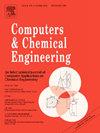Structured nonlinear process modeling using neural networks and application to economic optimization
Abstract
This paper presents a model identification approach to develop structured dynamic models that utilize both the available first principles knowledge and neural networks (NNs) estimated from data. The NNs in the dynamic model are used to approximate some complex unknown functions that may be challenging to model in applications using the available first principles knowledge. The parameters in the NNs are estimated by solving a multistep ahead prediction error minimization problem. The efficacy of the modeling approach is demonstrated via case studies with an illustrative chemical reactor and an industrially relevant styrene polymerization process. In the latter example, we use NNs to approximate unknown reaction kinetics and polymer moment functions in the structured model. The economic performances of the structured models are analyzed by solving a steady-state optimization problem. First, we elucidate that to obtain a good steady-state economic performance using the structured models, the training data collected from the plant should contain sufficient steady-state information. In the styrene polymerization example, we examine the economic performances of two structured models with different NN parameterization choices. We show that a structured model that utilizes the most possible physical information about the process provides a median loss of 6.4% compared to the optimal performance of the true plant across a range of steady-state problems. We emphasize in the case studies that physical insight about the process is critical to obtain good economic performance using the structured models.

 求助内容:
求助内容: 应助结果提醒方式:
应助结果提醒方式:


